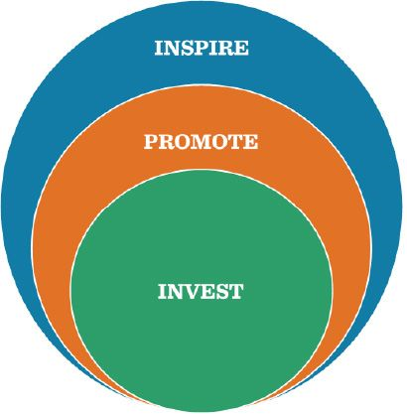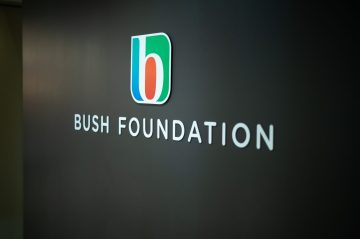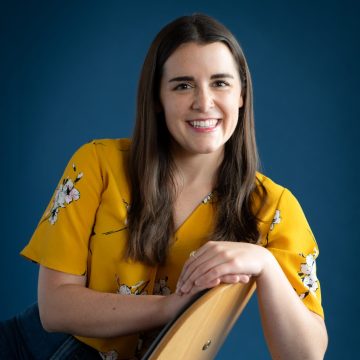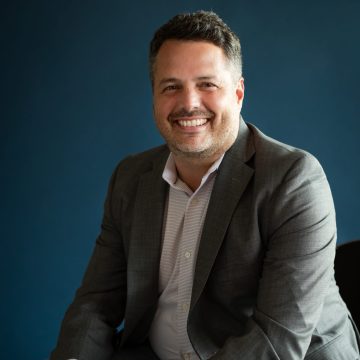Paper
Five Year Reflection: Communications as Program
DATE
October 8, 2017
Contributors: Dominick Washington and Jen Ford Reedy
Less than 10% of all private foundations have a website, according to the Foundation Center. That’s a bit shocking until you realize that most private foundations can afford to be, well, private. They don’t need to raise money, and they don’t need to sell anything. They don’t really have to communicate anything to anyone except the Internal Revenue Service.
We believe this approach to communications leaves a lot of potential impact on the table. We believe effective communications is a potent strategy for doing the most good possible with our resources. Communications is an essential part of our work in two ways:
1. Communications is a program strategy across all of our work
The Bush Foundation invests tens of millions of dollars every year to help make our region better for everyone. If all we did was invest money in great people and great organizations doing great work in our region, we could pat ourselves on the back and say, “Well done.” But we believe we can amplify our impact if we promote the people and organizations we support. This can bolster their credibility in the community and generate more attention for their work which could result in attracting more resources and opportunities. And we believe we can have even more impact if the stories and lessons we share inspire others to do more good in their communities. We picture this grantmaking approach as overlapping circles.
Our money only goes so far. Our influence can go a lot farther.

How this works:
The Bush Prize
The Bush Prize for Community Innovation provides flexible capital of up to $500,000 to organizations with a track record of making great ideas happen.
Invest
We have an intensive process to select outstanding Bush Prize winners that combines staff due diligence with selection by community advisors.
Promote
We heavily promote the announcement of Bush Prize winners throughout our region, using an outside public relations firm to help generate earned media in addition to our own social media. We then create videos of each Bush Prize winner for us and the respective organizations to use to tell their story. The videos have our logo and endorsement in them, so it lends credibility beyond what a self-produced video provides.
Inspire
Combining insights from our evaluators and the talents of artists, we publish “creative case studies” that highlight the lessons of how Bush Prize winners do their work that we believe could be useful to other organizations. These are distributed in print and online, through all our communications channels and through Pollen Midwest, a regional online community.
2. Communications is a program strategy — in and of itself
Within most foundations, the program teams are where the real do-gooding work happens. Communication teams are viewed as a support function. They are there when you need to make an announcement, if you make announcements.
At the Bush Foundation, the communications team is a program team. It is one of three teams united under our “community network” umbrella. Each team works, in some way, to inspire, equip and connect people to more effectively lead change. The communications team owns and advances its own program objectives through tactics such as grants, events, publications, social media and earned media.
The Bush Foundation believes that one of the most important things we can do is help people think bigger and think differently about what is possible. We believe that the more connected leaders are in our region — and the more diverse their networks — the more innovative and resilient our region will be. This is the work of our communications program.
How we’ve changed
In the past five years, as we have embraced the idea of communications as program, we have changed how we approach every aspect of our communications work. Specifically:
HOW WE THINK ABOUT OUR ANNUAL REPORT
We repurposed our annual report into a new publication called bMag. Given the nature of our work, one of our most important assets is the network of leaders who feel a connection to the Bush Foundation. bMag is intended to affirm and grow that connection and to showcase the work of the leaders in our network to others.
FROM
- Purpose was to explain what we were doing.
- Focused on the past year’s activities.
- Told the story of our strategic initiatives, with sidebars on grantees doing the work.
- Our 2012 report mentioned three grantees and listed names of the Bush Fellows and Native Nation Rebuilders selected that year.
- Distributed to stakeholders.
- Print-only publication; available as pdf on website.
TO
- Purpose is to inspire, equip and connect leaders.
- Highlights the work happening now tied to investments the Foundation has made through the decades.
- Tells the stories of grantees and Fellows, with sidebars on how they relate to the Foundation’s strategy.
- Our 2012 bMag featured 20 grantees, Bush Fellows and Native Nation Rebuilders with short updates or callouts on the work of more than 50 others (plus names and photos of newly selected Fellows and Rebuilders).
- Distributed to stakeholders, key influencers, and prospective grantees and Fellows.
- Also created visually compelling online versions of the stories which we use to both promote current grantees and Fellows, and to attract new ones.
HOW WE ANNOUNCE BUSH FELLOWS
For more than 50 years, the Bush Fellowship has been a flagship program for us. We believe the value of receiving a Bush Fellowship is directly tied to its prestige, and its prestige is directly tied to how many people know and understand what it is.
The announcement of new Fellows is one of our best opportunities to generate attention for the program and for the Fellows themselves. We have made several changes to these efforts in the past five years to maximize that attention.
FROM
- Selected and announced four times a year.
- Announced via news release with little direct outreach to media and minimal coverage. In 2012, the first announcement of the year yielded seven stories.
- No coaching or support for Fellows for the announcement.
- Single social media promotion of announcement.
TO
- One single selection process and announcement.
- Announced via news release and bolstered with prominent showcase on website featuring photos and bios for each new Fellow. Worked with a public relations firm to manage media outreach which yielded nearly 50 stories within six weeks of the announcement.
- Meeting with public relations counselor is embedded in the process to help capture and share the Fellow’s story.
- Social media promotions of the announcement and of every individual Fellow. Continues throughout the year, with ramp up as part of an integrated campaign when applications open for the next year.
HOW WE THINK ABOUT EVENTS
We were already hosting many events back in 2012. Most of those events were grantee convenings to bring together people already in our network to advance a particular Foundation initiative.
While we still host some events like that, we now focus on connecting leaders across our initiatives and programs who are not already in our network. These events range from bushCONNECT, our flagship event with 1,100 attendees and created with nearly 40 partners, to office hours held in communities around the region.
We also see the power of events beyond those we design and host ourselves and have worked to get more benefit for our region by sponsoring events hosted by others.
FROM
- Events focused exclusively on Foundation initiatives.
- Events intended for people in our network.
- Occasionally sponsor events by other organizations.
- Occasionally took partners to national conferences.
TO
- Events focused on connecting leaders across our region working on a wide range of issues.
- Events specifically designed to attract new people into our network. (For example, 350 people who attended bushCONNECT 2016 were cohorts recruited by 18 partner organizations).
- Regularly sponsor events by other organizations through open and competitive selection process. In 2016, we sponsored nearly 60 events attended by thousands of people across the region.
- In 2017, we worked with six national conferences to create scholarship opportunities for 275 people from the region.
In addition to all the strategies described above, getting communications right is a critical part of HOW we do our work at the Foundation. We have changed the tone and style of Foundation communications to be more accessible and friendly. For example, we rewrote our grant award letter with the goal of having a recipient want to post it on the office refrigerator.
In the past five years, we have also worked in a variety of ways to make the Foundation more permeable. Effective communications is at the heart of that work as well (see learning paper: No-Moat Philanthropy).
Our next frontiers
We are working to make communications even more integral to our work. For example, whenever we develop an evaluation strategy for a program or initiative we identify the audiences we think might be interested in what we learn. Then we design our evaluation methodology with an eye towards sharing this information in a way that is best suited for each audience.
We want to use simple language and find that it is hard to prevent drifting into foundation-ese. We have an effort underway right now to simplify all our program language.
We are also working to improve accessibility on other fronts, like removing barriers related to language and disability. We were glad that a recent SEO audit found we met 97% of accessibility standards on our website. And, at the same time, we were embarrassed when we watched the closed-captioning of our webinars and discovered our “community innovation grants” were auto-captioned as “community invasion grants.” We know we can do better.
We are also working to get better at reaching the people we think should know about the amazing work that happens in our region. We recently invested in a robust constituent relationship management system and continue to develop new strategies and habits to make sure we are always communicating the right message to the right people at the right time.
CONCLUSION
We know that we don’t have enough money to buy a solution to every challenge in our region. Approaching communications as a program allows us to get more good out of every grant we make. Simply put, it is an essential part of our work to make the region better for everyone.
Continue reading
-

News
Opportunity to work with us
As part of our office move later this year, we are exploring possibilities for the build out of the ground floor of the building. We are in the early stages of this and considering different types of operating models and potential partnerships.
-

Staff note
Coordinating the work of our contact hub
We aim to be radically open in all that we do, and that includes being more accessible to more people and sharing what we learn along the way.
-

Staff note
Making every dollar work through impact investing
We have benefitted from the experience of other funders as we developed our impact investing approach. Now we are paying it forward and sharing what we have done and what we have learned.